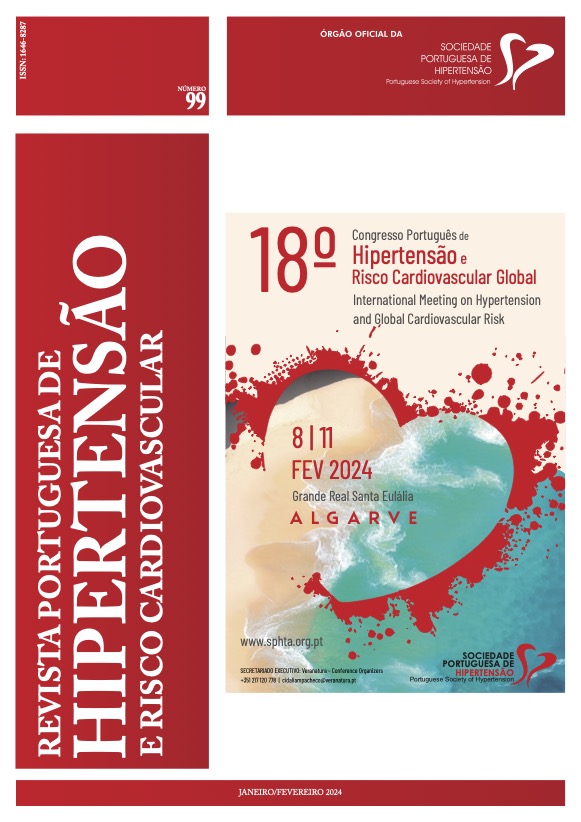SCLERODERMA RENAL CRISIS, AN ATYPICAL MANIFESTATION OF MALIGNANT HYPERTENSION: A CASE REPORT
DOI:
https://doi.org/10.58043/rphrc.117Keywords:
hypertension, malignant hypertension, systemic sclerosis, sclerodermal renal crisisAbstract
Introduction:The Malignant hypertension (MH) is the most severe form of hypertension, constituting a hypertensive emergency, a clinical entity with a high cardiovascular risk and a high risk of developing end-stage renal disease. MH can be accompanied by complications, with the most characteristic being microangiopathic lesions and renal dysfunction and it is essential to carry out an appropriate assessment of the identifiable causes of hypertension, in order to quickly institute the most appropriate therapy. Clinical Case: A 49-year-old woman, with a recent diagnosis of systemic sclerosis and no other previous history, was brought to the emergency department with complaints of fatigue, asthenia, and anorexia that had been progressing for several days. Upon admission, she presented with a hypertensive emergency associated with severe acute kidney injury, oligoanuria, and multifactorial encephalopathy (uremic and hypertensive). Concurrently, she exhibited proteinuria with hematuria and microangiopathic hemolysis with autoimmune hemolytic anemia, leading Scleroderma Renal Crisis (SRC). In this context, she underwent renal replacement therapy, initially continuous and later intermittently, without recovering renal function. In order to effectively control malignant hypertension, she required intravenous antihypertensive therapy, which was discontinued after achieving effective blood pressure control with oral therapy, requiring three classes of antihypertensives (captopril, nifedipine, and clonidine). For the treatment of the underlying disease, she remained on the maximum dose of ACE inhibitors, in addition to immunosuppressive therapy with corticosteroids, mycophenolate mofetil, and bosentan. Beyond renal and hematological involvement, the patient also presented pulmonary involvement, including pulmonary fibrosis and cardiac involvement with pulmonary hypertension leading to decompensated heart failure. After controlling her blood pressure profile and managin systemic sclerosis, the patient was discharged while maintaining a regular hemodialysis program. Discussion/Conclusion: This case is presented as an example of an atypical initial manifestation of malignant arterial hypertension (MH) with a rather insidious course, leading to multiple comorbidities. This is an example which confirms the survival rate of this patients has improved significantly with the early detection, effective blood pressure control and the availability of hemodialysis and even renal transplantation.Downloads
References
Januszewicz A, Guzik T, Prejbisz A, Mikolajczuk T, Osmenda G, Januszewicz W. Malignant hypertension: new aspects of an old clinical entity. Pol Arch Med Wewn. 2016; 126 (1-2): 86-93.
Unger T, Borghi C, Charchar F, Khan NA, Poulter NR, Prabhakaran D, Ramirez A, Schlaich M, Stergiou GS,TomaszewskiM,etal.2020.InternationalSocietyof Hypertension Global Hypertension practice guidelines. Hypertension. 2020;75:1334–1357.
Boulestreau et al. Malignant Hypertension: Current Perspectives and Challenges. J Am Heart Assoc. 2022;11:e023397.
Keith N. Classification of hypertension and clinical differentitation of the malignant type. Am Heart J. 1927;11:597–608.
Hudson M, Ghossein C and Steen V, Scleroderma renal crisis. Presse Med 50 (2021) 104063.





